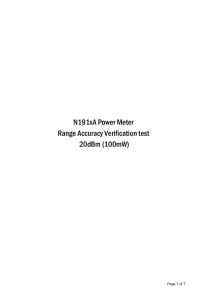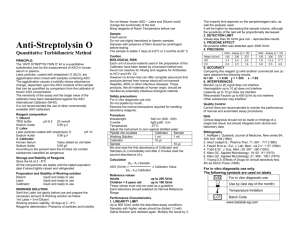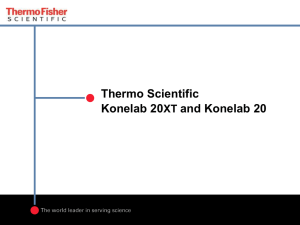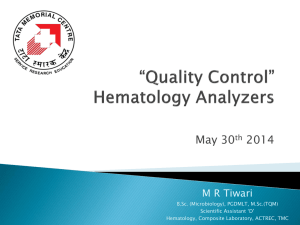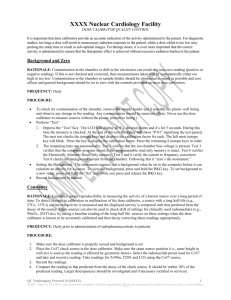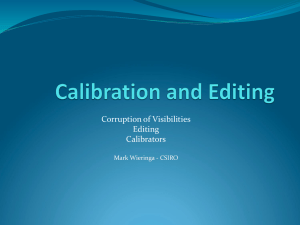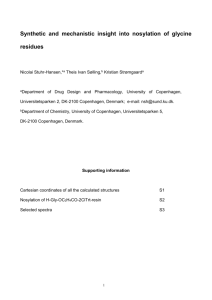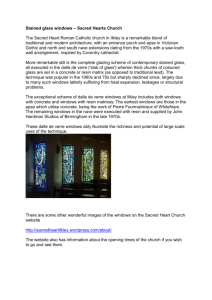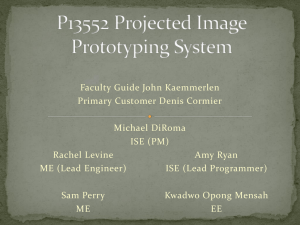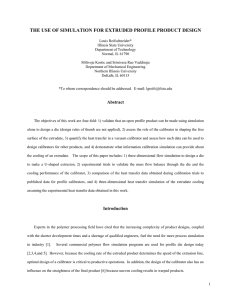Glycohemoglobin
advertisement
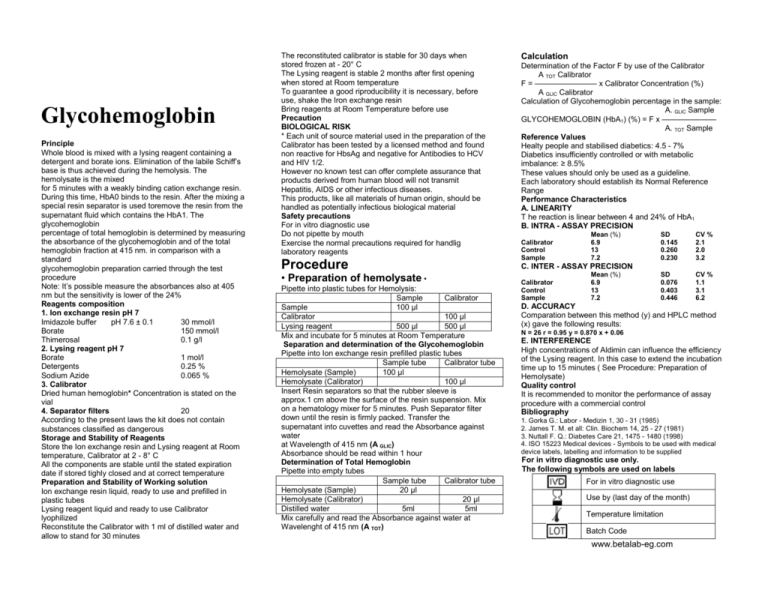
Glycohemoglobin Principle Whole blood is mixed with a lysing reagent containing a detergent and borate ions. Elimination of the labile Schiff’s base is thus achieved during the hemolysis. The hemolysate is the mixed for 5 minutes with a weakly binding cation exchange resin. During this time, HbA0 binds to the resin. After the mixing a special resin separator is used toremove the resin from the supernatant fluid which contains the HbA1. The glycohemoglobin percentage of total hemoglobin is determined by measuring the absorbance of the glycohemoglobin and of the total hemoglobin fraction at 415 nm. in comparison with a standard glycohemoglobin preparation carried through the test procedure Note: It’s possible measure the absorbances also at 405 nm but the sensitivity is lower of the 24% Reagents composition 1. Ion exchange resin pH 7 Imidazole buffer pH 7.6 ± 0.1 30 mmol/l Borate 150 mmol/l Thimerosal 0.1 g/l 2. Lysing reagent pH 7 Borate 1 mol/l Detergents 0.25 % Sodium Azide 0.065 % 3. Calibrator Dried human hemoglobin* Concentration is stated on the vial 4. Separator filters 20 According to the present laws the kit does not contain substances classified as dangerous Storage and Stability of Reagents Store the Ion exchange resin and Lysing reagent at Room temperature, Calibrator at 2 - 8° C All the components are stable until the stated expiration date if stored tighly closed and at correct temperature Preparation and Stability of Working solution Ion exchange resin liquid, ready to use and prefilled in plastic tubes Lysing reagent liquid and ready to use Calibrator lyophilized Reconstitute the Calibrator with 1 ml of distilled water and allow to stand for 30 minutes The reconstituted calibrator is stable for 30 days when stored frozen at - 20° C The Lysing reagent is stable 2 months after first opening when stored at Room temperature To guarantee a good riproducibility it is necessary, before use, shake the Iron exchange resin Bring reagents at Room Temperature before use Precaution BIOLOGICAL RISK * Each unit of source material used in the preparation of the Calibrator has been tested by a licensed method and found non reactive for HbsAg and negative for Antibodies to HCV and HIV 1/2. However no known test can offer complete assurance that products derived from human blood will not transmit Hepatitis, AIDS or other infectious diseases. This products, like all materials of human origin, should be handled as potentially infectious biological material Safety precautions For in vitro diagnostic use Do not pipette by mouth Exercise the normal precautions required for handlig laboratory reagents Procedure • Preparation of hemolysate • Pipette into plastic tubes for Hemolysis: Sample Calibrator Sample 100 µl Calibrator 100 µl Lysing reagent 500 µl 500 µl Mix and incubate for 5 minutes at Room Temperature Separation and determination of the Glycohemoglobin Pipette into Ion exchange resin prefilled plastic tubes Sample tube Calibrator tube Hemolysate (Sample) 100 µl Hemolysate (Calibrator) 100 µl Insert Resin separators so that the rubber sleeve is approx.1 cm above the surface of the resin suspension. Mix on a hematology mixer for 5 minutes. Push Separator filter down until the resin is firmly packed. Transfer the supernatant into cuvettes and read the Absorbance against water at Wavelength of 415 nm (A GLIC) Absorbance should be read within 1 hour Determination of Total Hemoglobin Pipette into empty tubes Sample tube Calibrator tube Hemolysate (Sample) 20 µl Hemolysate (Calibrator) 20 µl Distilled water 5ml 5ml Mix carefully and read the Absorbance against water at Wavelenght of 415 nm (A TOT) Calculation Determination of the Factor F by use of the Calibrator A TOT Calibrator F = ———————— x Calibrator Concentration (%) A GLIC Calibrator Calculation of Glycohemoglobin percentage in the sample: A. GLIC Sample GLYCOHEMOGLOBIN (HbA1) (%) = F x ——————— A. TOT Sample Reference Values Healty people and stabilised diabetics: 4.5 - 7% Diabetics insufficiently controlled or with metabolic imbalance: ≥ 8.5% These values should only be used as a guideline. Each laboratory should establish its Normal Reference Range Performance Characteristics A. LINEARITY T he reaction is linear between 4 and 24% of HbA1 B. INTRA - ASSAY PRECISION Calibrator Control Sample Mean (%) 6.9 13 7.2 SD 0.145 0.260 0.230 CV % 2.1 2.0 3.2 SD 0.076 0.403 0.446 CV % 1.1 3.1 6.2 C. INTER - ASSAY PRECISION Calibrator Control Sample Mean (%) 6.9 13 7.2 D. ACCURACY Comparation between this method (y) and HPLC method (x) gave the following results: N = 26 r = 0.95 y = 0.870 x + 0.06 E. INTERFERENCE High concentrations of Aldimin can influence the efficiency of the Lysing reagent. In this case to extend the incubation time up to 15 minutes ( See Procedure: Preparation of Hemolysate) Quality control It is recommended to monitor the performance of assay procedure with a commercial control Bibliography 1. Gorka G.: Labor - Medizin 1, 30 - 31 (1985) 2. James T. M. et all: Clin. Biochem 14, 25 - 27 (1981) 3. Nuttall F. Q.: Diabetes Care 21, 1475 - 1480 (1998) 4. ISO 15223 Medical devices - Symbols to be used with medical device labels, labelling and information to be supplied For in vitro diagnostic use only. The following symbols are used on labels For in vitro diagnostic use Use by (last day of the month) Temperature limitation Batch Code www.betalab-eg.com
